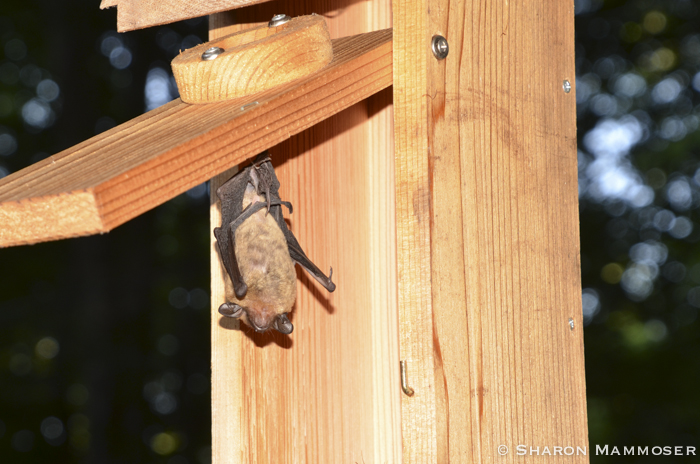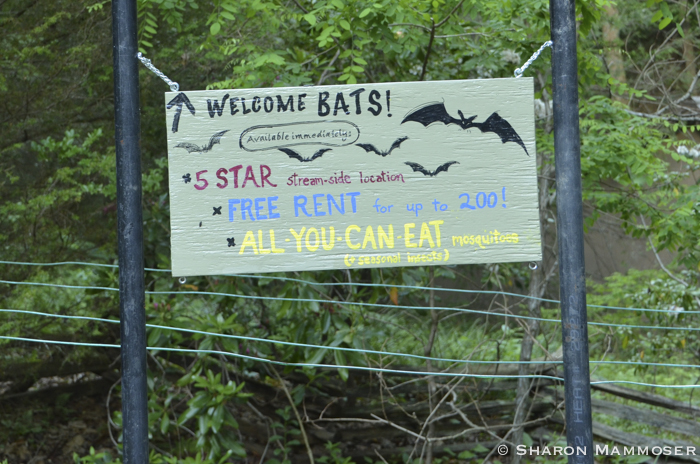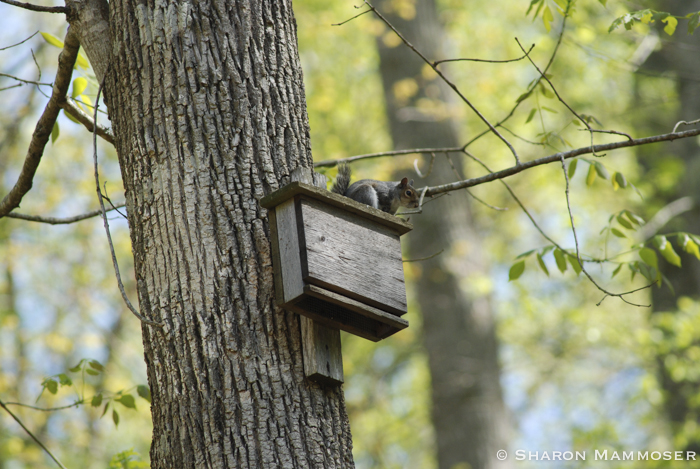As you’ve likely heard me mention a time or two before, my house is in the middle of the woods. There are 4 bluebird boxes on the property, in small clearings between the building and the forest. I was checking them the other day to see the status of things and was surprised when I opened one to find a bat resting in there. I quickly closed it up, not wanting to make it fly out in the middle of the day and then returned at dusk to photograph it.

He looked at me and I looked at him and then I snapped his picture and left him to get ready for his nightly excursion. Since then I have checked the same box a few times, but he has found another place to roost for the day.
The bat is a Big Brown bat, one of our most common species in North America. Big brown bats have a wingspan of 12-16 inches. They weigh .5-1.2 ounces. Contrary to popular belief, bats are NOT blind or dirty, nor will they get caught in your hair or suck your blood. Also, they don’t all have rabies. (Less than 1/2 of 1% contract rabies and unlike raccoons and other animals who might get aggressive when they have rabies, a sick bat usually leaves the colony and goes off to die alone. ) As is true of any wild animal, you should refrain from picking up a sick or injured bat.
Like most of our North American bats, big brown bats are insectivores, feeding on a variety of insects from beetles, to flies, moths, wasps, mosquitoes and other night flying bugs. Having a colony in your yard means a lot less insects that can feed on you or the plants in your garden.
Did you know bats are the world’s longest lived mammals for their size? Some live up to 30 years! The average lifespan of a big brown bat is 18-20 years, though many don’t make it through their first winter because they don’t build up enough fat to sustain them. Big brown bats, like many other species here in N.A. hibernate during the winter since there are no insects for them to eat. They will do this in caves, mines, abandoned buildings, even attics and barns. During hibernation if they are disturbed, they wake and then use up valuable fat reserves. If this happens too many times, they will likely die of starvation.
 If you are interested in helping bats and putting up a bat box in your yard, here’s a great resource. This is also a great resource if you have bats in your house and want to know about humanely removing them or if you already have a bat box but haven’t gotten any bats to live there yet. It is best to put a bat box on a pole or even the side of a building, like a house or a barn, as opposed to a tree since putting one on a tree opens the house to predators like snakes, raccoons and squirrels. There are other factors that will help you achieve a better chance at success–you can read more on biologist and photographer, Merlin’s Tuttle’s website, or here at Bat Conservation and Management.
If you are interested in helping bats and putting up a bat box in your yard, here’s a great resource. This is also a great resource if you have bats in your house and want to know about humanely removing them or if you already have a bat box but haven’t gotten any bats to live there yet. It is best to put a bat box on a pole or even the side of a building, like a house or a barn, as opposed to a tree since putting one on a tree opens the house to predators like snakes, raccoons and squirrels. There are other factors that will help you achieve a better chance at success–you can read more on biologist and photographer, Merlin’s Tuttle’s website, or here at Bat Conservation and Management.

If you’d like to read more about bats, check out these posts I’ve written through the years: Are bats blind? 10 Things things that might surprise you , 5 Ways to help bats , Why are bats dying, Is there really such a thing as Vampire Bats?, and lastly, how do bats not fall to their death while sleeping?



That looks exactly like the only bat we have living in our big bat house